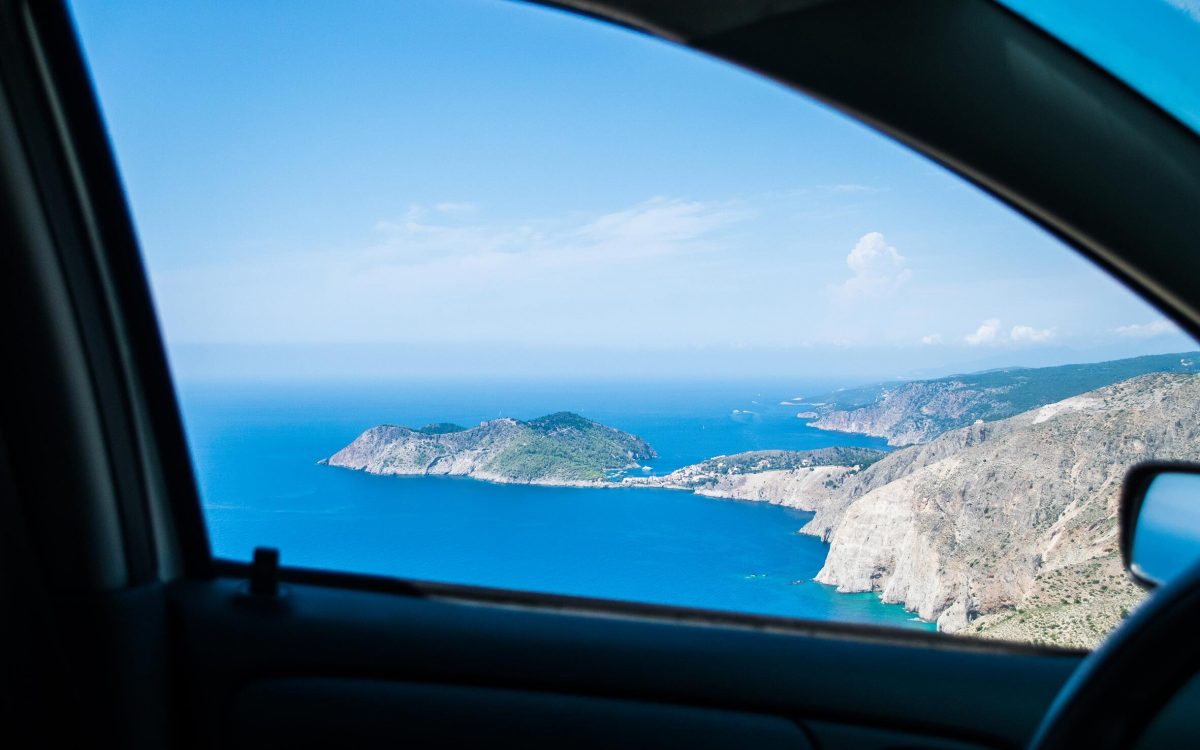Greece has islands so small they barely have room for their goats, let alone roads, as well as some so large that vehicular travel is as much a part of everyday life on them as it is on the mainland. Between these two extremes, there are many islands in both the Aegean and Ionian seas where, while you could make do without a car, that might mean passing up on lots of good stuff: peaceful mountain villages, hidden beaches far from the bustle of the port and, of course, the freedom to come and go anywhere, as you please. Remaining unbound by bus schedules and untethered to any particular resort or town is the best way to keep those unscripted experiences coming.
You can almost always rent a car on an island, but if you’re coming from Athens, you might want to pick up a vehicle in town and then take it aboard the ferry so that when you arrive at your destination, all you need to do is drive off the boat. Whatever you decide, here’s a collection of Greek islands best explored from behind the wheel.
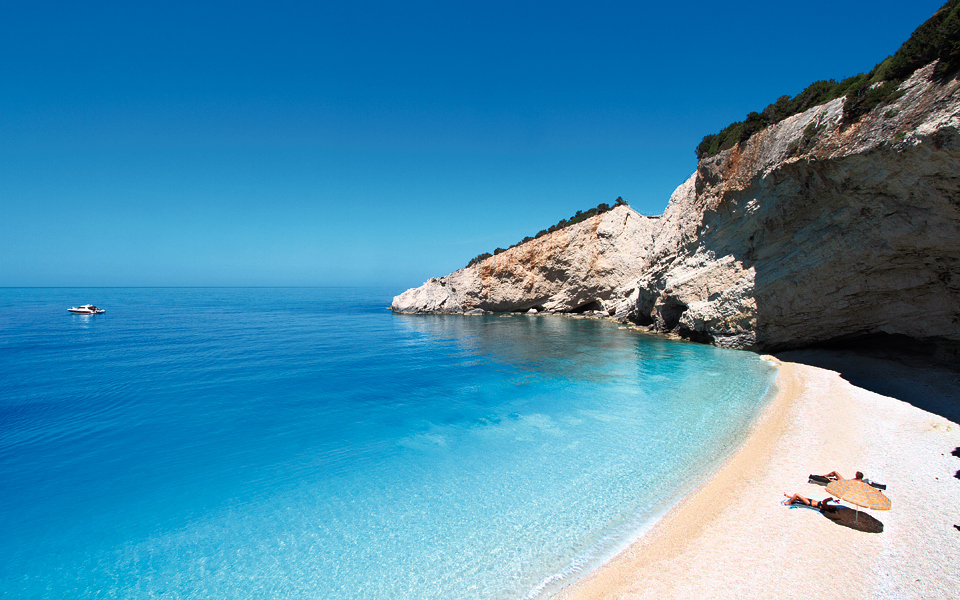
© Shutterstock
Lefkada
Large and lovely, the island of Lefkada, said by some to have been the “Ithaca” of which Homer writes in the Odyssey, is connected to mainland Greece by a long causeway, making it one of the very few Greek islands to which you can actually drive. (It may have been joined to the mainland in antiquity as well.)
Although Lefkada sided with Sparta in the Peloponnesian Wars, the landscapes here are anything but spartan: keywords are lush and verdant. The best way to get to beaches at places like Kalamitsi and Porto Katsiki is by car, and you’ll be able to drive to mountain villages such as Karya or Eglouvi, or to the Dimosari Waterfalls, or even as far as the famed lighthouse on Cape Lefkada.
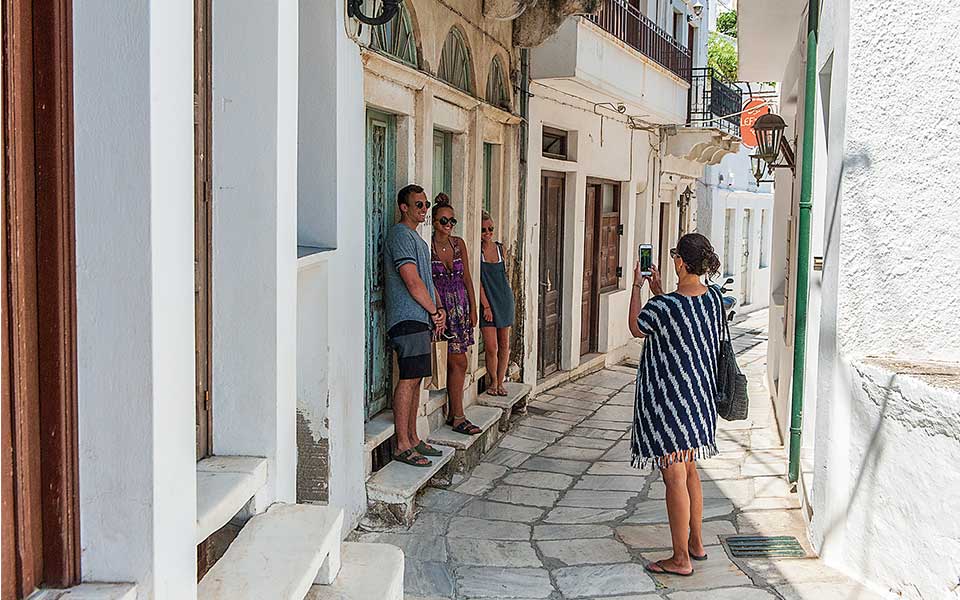
© Giorgos Detsis
Naxos
It might not seem like it when the ferry arrives, but Naxos is the largest of the Cycladic islands, with plenty to explore beyond its lively main town, including high mountains crisscrossed with fertile valleys, captivating hill towns and medieval monuments. You could head 28 miles east from the main port to the village of Apeiranthos; its 17th-century Venetian towers of Zevgolis and Bardanis, its two-story marble archontika (mansions) and its marble-paved lanes make it a special place.
The Bazeos Tower in Sagri and the Belonia Tower in Galanado also invite inspection, as do serene villages such as Chalki, Danako and Komiaki, the last of which sits at an elevation of 700 meters and offers sweeping sea views. In antiquity, Naxos was renowned for marble quarrying and there are impressive remnants: head to Apollonas in the north for a gander at the 10-meter Kouros of Apollonas, a sixth-century BC sculpture that was left unfinished.
You can find two more Kouroi, not quite as tall, at Phlerio. As for beaches, there are too many good ones to mention them all, but a local favorite is the wide, white sandy Aghios Prokopios, an easy jaunt south from Naxos Town. Still further south from there lie the inland Sangri villages and the brooding Apaliros Castle.
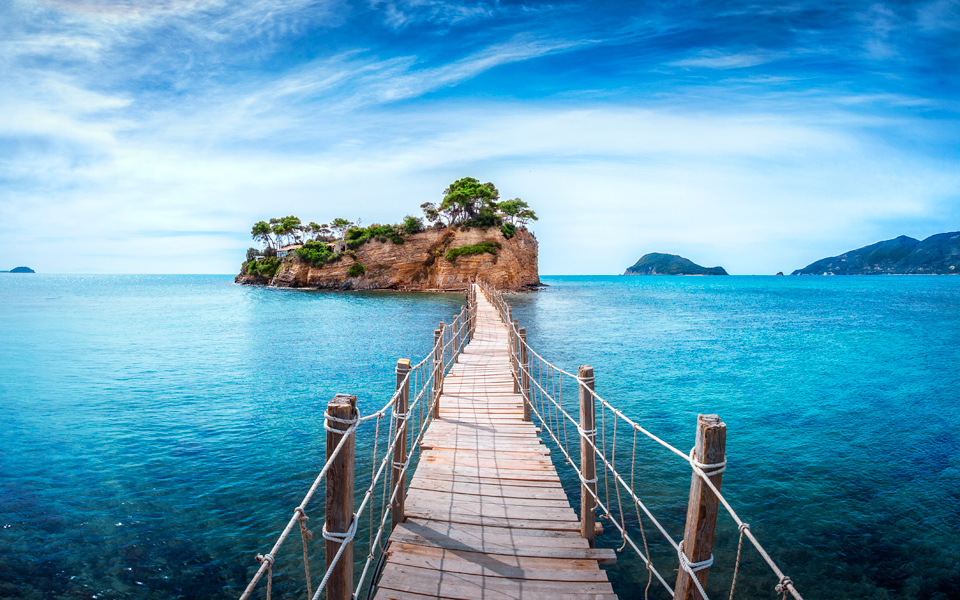
© Shutterstock
Zakynthos
Remember, you can’t drive to Navagio, or Shipwreck Beach – the most famous spot in Zakynthos, but maybe that’s a good thing. The boat trips that provide the sole access to this dramatic west coast attraction tend to make it overcrowded enough (the cliff-fringed setting is indeed spectacular, but the beach itself is rather small), but you can drive to the lookout platform between Anafonitria and Volimes, do your social-media duty and then motor on to the many other gorgeous stretches of coastline along the island’s scenic western shores.
While rowdy tourist areas in the south like Laganas have at times given the island a bad rap, you have only to drive southwest to places like Keri and Limni Keriou to see why the Venetians called Zakynthos, or Zante, the “Flower of the Levant.”
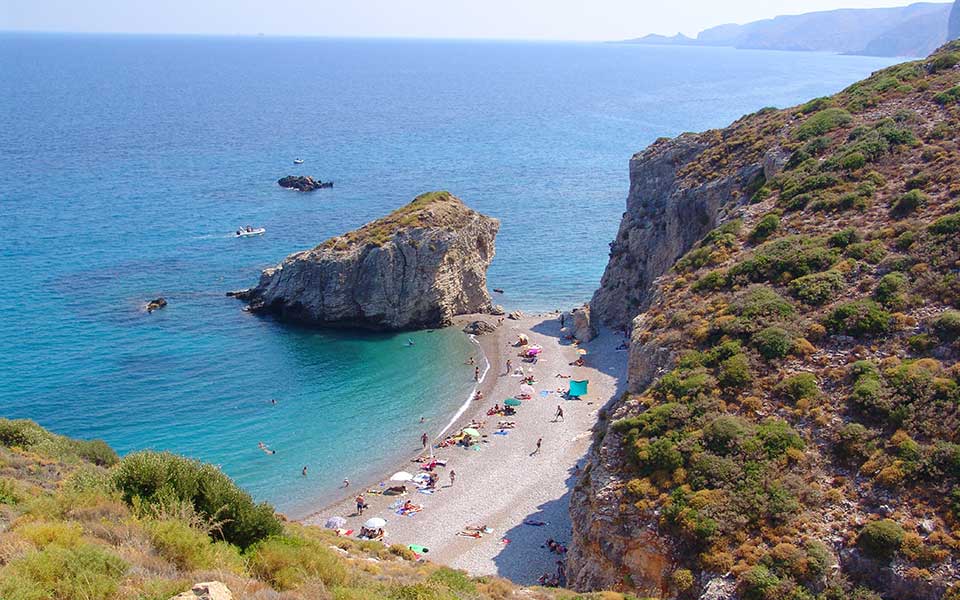
© Shutterstock
Kythira
When Aphrodite first saw the light of day on Kythira she didn’t need a car to explore the island, but chances are you will: at nearly 300 square kilometers, the island isn’t small. It is, however, relatively unknown, despite its proximity to the Peloponnese, and this fact contributes to its allure.
If, instead of departing from the port of Piraeus, you take the vessel F/B Porfyrousa from Neapoli, it’s only an hour and a half to the port of Diakofti, gateway to your pristine island bliss. Once there, you might want to head straight for one of the hauntingly beautiful beaches such as Kaladi, about 10 kilometers south of where the ferry comes in and 15 kilometers northeast of Kythira Town, the island’s main settlement. Elsewhere on the island, you’ll find the ruins of Paliochora, the village of Potamos and a great deal of unspoiled scenery – a bit more motorist-friendly in the southern half of the island than in the north.
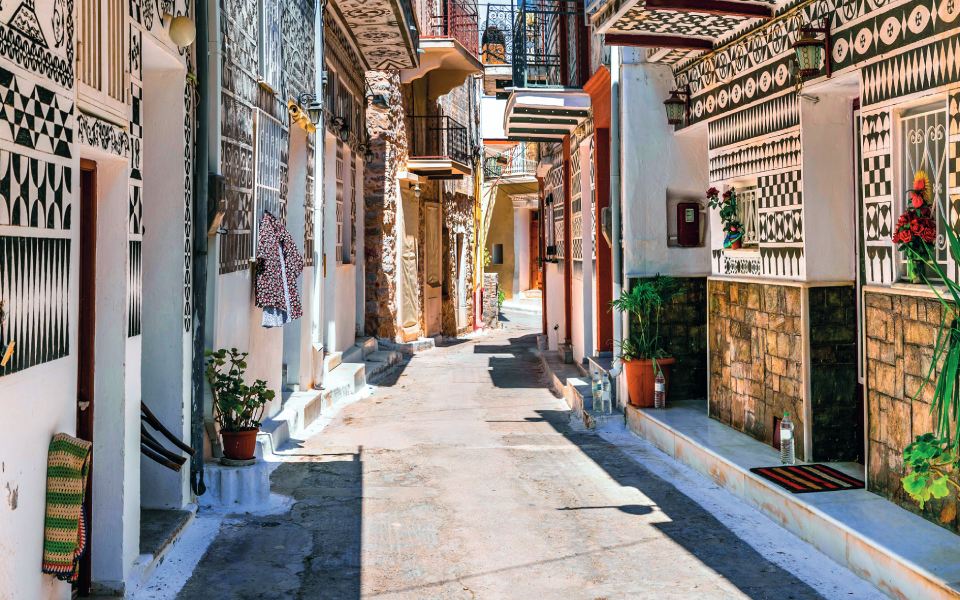
© Visualhellas.gr
Chios
Crescent-shaped Chios is Greece’s fifth largest island, with plenty of intriguing villages and rustic landscapes to explore within its historically rich contours. Just five kilometers south of Chios Town, you can visit Kampos, an area first founded by the Genoese in the 14th century that’s home to elegant stone mansions ringed by citrus orchards.
But it’s the fertile southern part of Chios where the mastic trees grow (resin from these trees is used to make Greece’s famed mastiha liqueur and other products); this region is home to the 24 medieval “mastic villages.” A good starting point for a tour would be in the village of Armolia, northwest of which is the Castle of Apolichnon, built during Genoese times. Next up could be the painted village of Pyrgi, famous for the geometric black-and-white “xysta” motifs that decorate the facades and balconies of the homes here.
Mesta is the most well-preserved of these medieval village. Toward the southern tip of the island, you’ll find Mavra Volia, a beautiful wide black pebble beach, while heading to the northern end of the island will bring you to the slopes of Mt Amani and Mt Pellinaio, with roads that skirt ravines and deserted beaches and take you to picturesque historic villages such as Volissos.
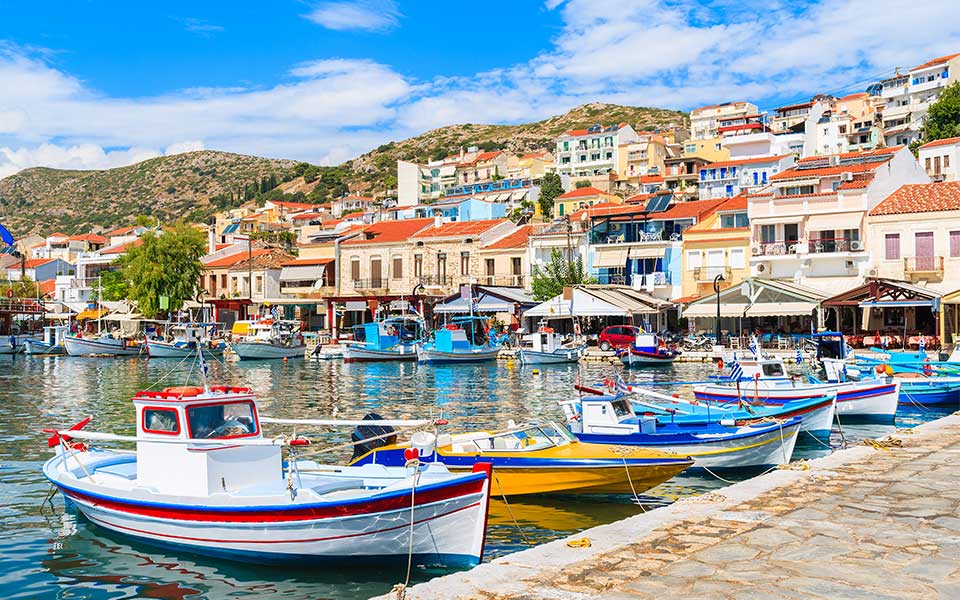
© Shutterstock
Samos
“You cannot explain everything to everyone,” said Pythagoras, the ancient Greek philosopher and mathematician who was born in Samos and is today closely identified with the island. So, if people ask why you decided to drive around this large scenic island in the eastern Aegean instead of, say, Corfu, just nod politely and drive on to archaeological landmarks like the Pythagoreion, with its famous Tunnel of Eupalino, or the Heraion, a vast sanctuary to the goddess Hera who, legend says, hailed from Samos. Meander around lush landscapes, dominated by the peaks of Mt Karvounis and Mt Kerkis, where you might just run into one of the local Samos iguanas (don’t try to pet them).
Stop at the Karlovassi Waterfalls or reward yourself with a swim at any number of great beaches such as Tsamadou, Platanakia, Potami, and Megalo Seitani, all of which lie northwest of Vathy, the traditional name for Samos Town.
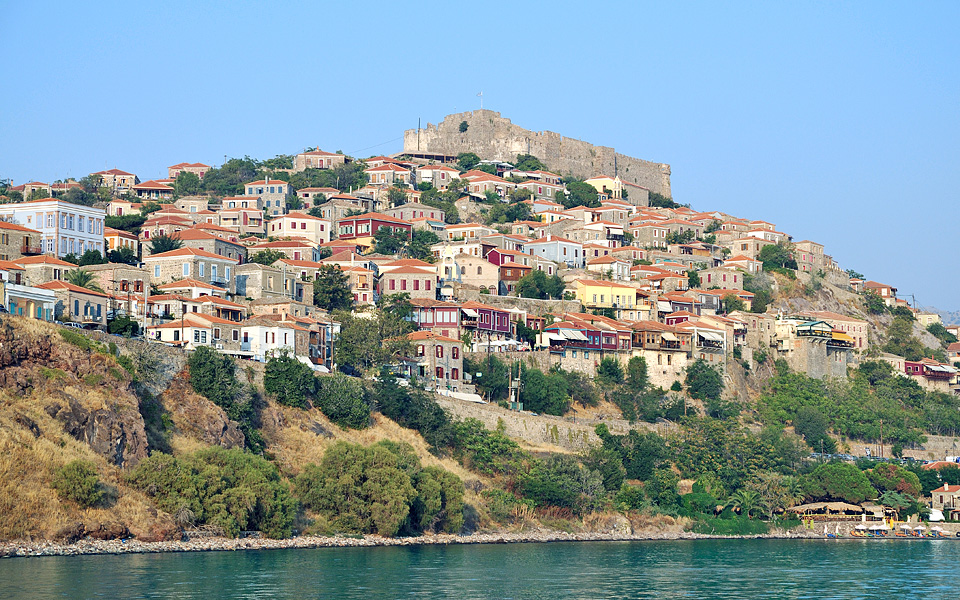
© Giorgos Atsametakis
Lesvos
Lesvos-bound travelers be advised: take any notions of sugar cube-white Greek island horas (towns) and boisterous beach bars and check them at the port, so to speak: when you get this far east in the Aegean, just a whisker away from Asia Minor, you’re in for a different kind of aesthetic. This different look starts right at the island’s stately capital, Mytilene, with its wealth of neoclassical architecture.
Heading north and west will take you through mountain forests and olive groves – lots of them – to rugged plains and even a petrified forest in the Sigri-Eressos-Anissa area in the far west. The southwest of the island is where you’ll find the black-sand beach of Skala Eresou; Aghios Isidoros Beach is east of the village of Plomari (home of Greece’s best-known ouzo distillery) on the southernmost coast. Greece’s third-largest island, Lesvos abounds in splendors scenic and gastronomic, and has a rich literary heritage, too.
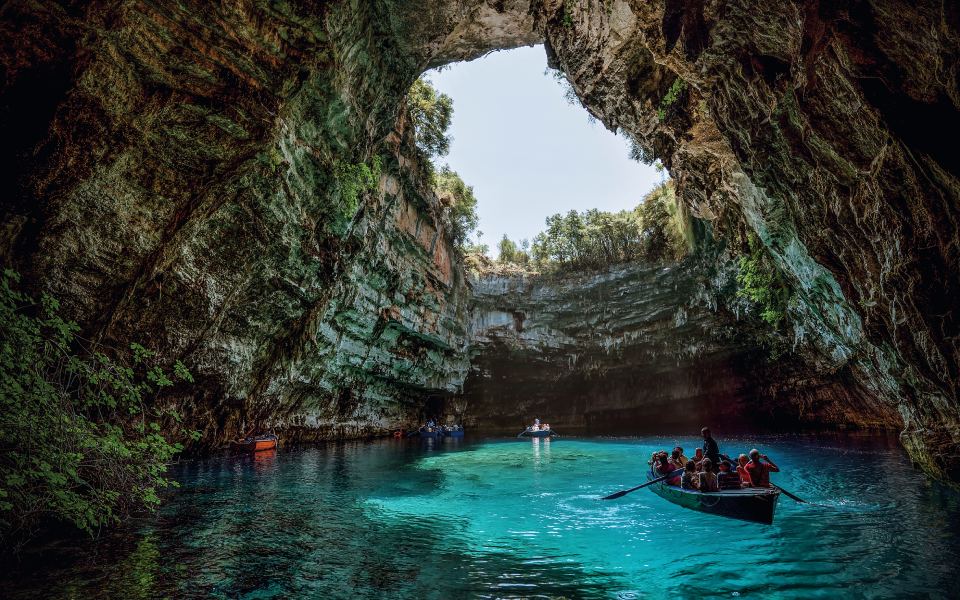
© Perikles Merakos
Kefalonia
The largest of the Ionian islands, Kefalonia is a natural candidate for discovery by car, starting with the island’s capital town of Argostoli where, despite the widespread destruction of the 1953 earthquake, you can still see traces of the Cyclopean walls and Venetian architecture. By contrast colorful, the town of Fiskardo, way up on the northern tip of the island, escaped the worst of that quake.
Another must for the northern part is Assos, an idyllic seaside village with dramatic stretches of coast surrounding it; the cliff-backed white sand beach of Myrtos to its south is just one attraction. About midway down the eastern side of the island, you’ll find the Cave Lake of Melissani, which, thanks to its collapsed roof, allows you the remarkable experience of looking at the sky while floating around in a cave; find it in the area near Sami called Karavomylos. Skala Beach, at the southern end of the island, is also great for a dip, and you could follow your swim up with a leisurely drive around the base of Mt Ainos.
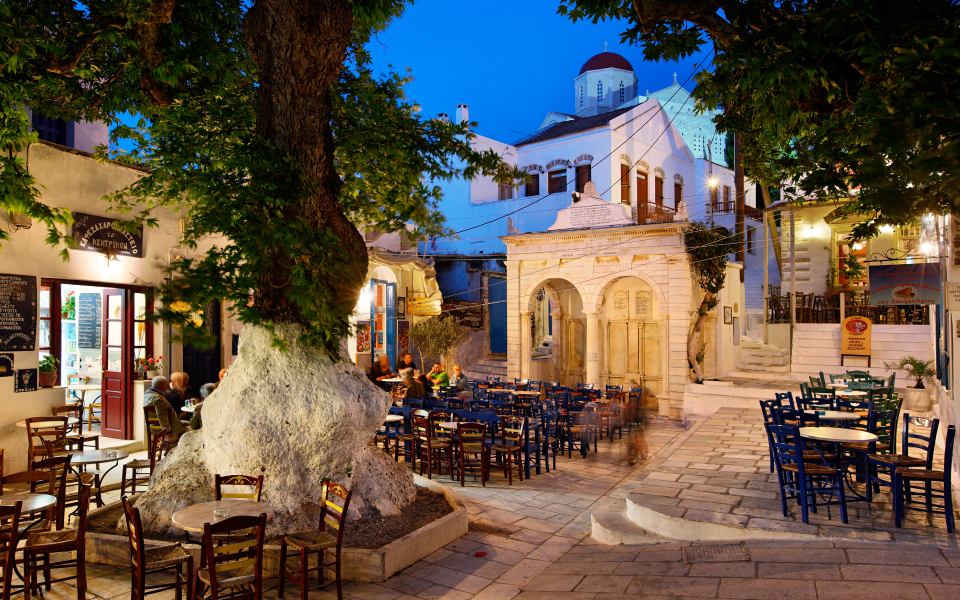
© Shutterstock
Tinos
One of the more popular Cycladic islands, Tinos was seemingly made to be discovered by car. The nearly 200-sq km island is only 86 nautical miles from Piraeus and just 62 miles from the port of Rafina, manageable distances with easy car-ferry connections. And there’s a lot more to see on this windswept island than its busy port and its iconic church.
The last Aegean island under Venetian rule to fall to the Turks, Tinos today reveals itself in layers; with a car, you can peel them away at your pace. A fairly ambitious but achievable day-long drive could have you begin from the pretty village of Pyrgos, home to a renowned professional school of sculpture, then head southeast through the hilltop villages of Isternia and Kardiani with a stop at Xobourgo, the rocky site of ancient Tinos and where the Venetians built a fortress. From there, it’s a short ride north to the beach of Kolymbithra, popular with surfers, while winding roads eastward will take you through the intriguing boulder-strewn landscapes around the village of Volax.

